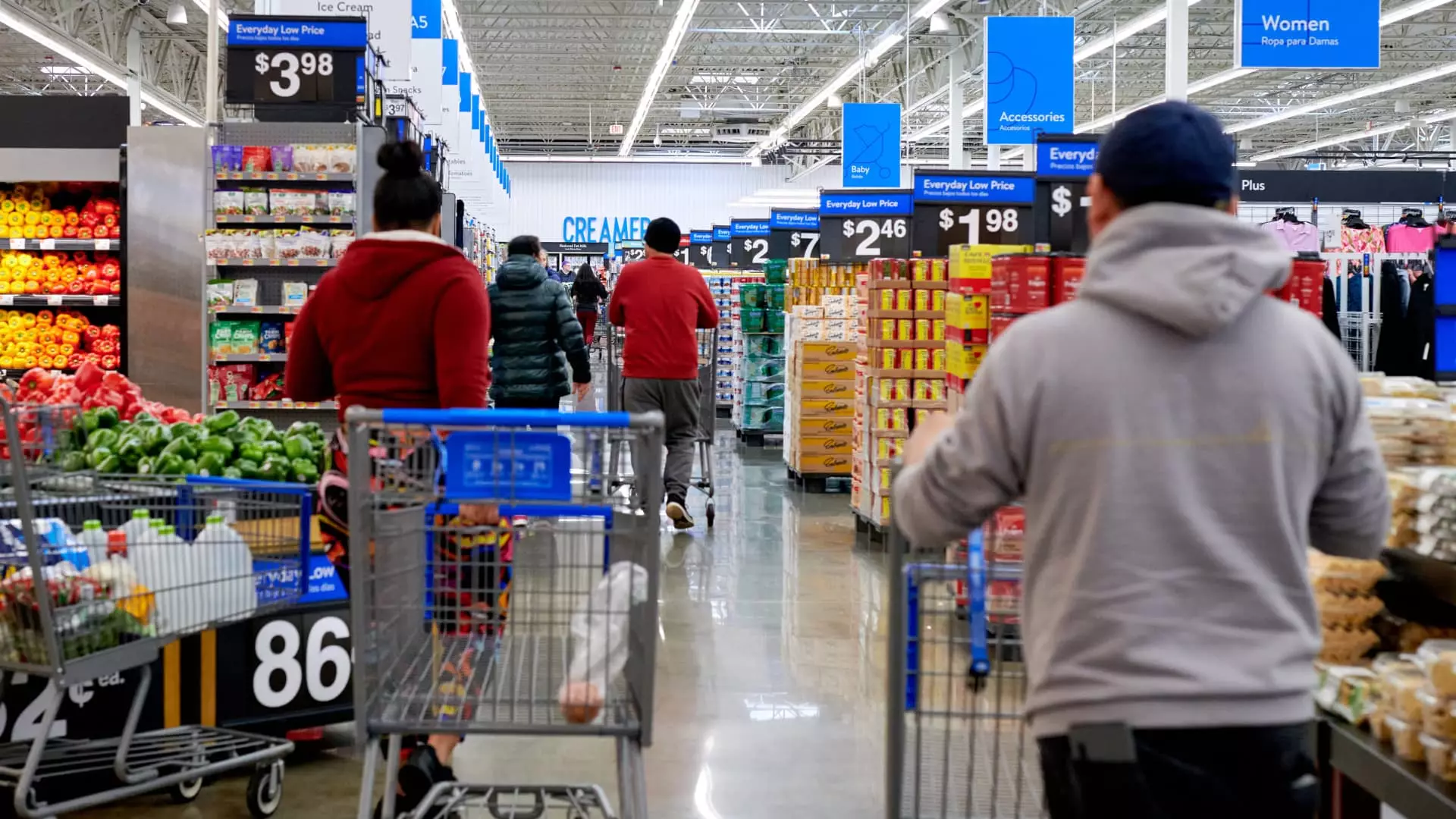For an extended period, there has been a perplexing discrepancy between the buoyancy of economic indicators and the pervasive pessimism felt by the average American consumer. Economists have termed this phenomenon the “vibecession,” a term encapsulating a prolonged period of negative sentiment that persists despite positive economic data. However, recent analyses suggest that this dark cloud of sentiment may finally be giving way to rays of optimism. As inflation rates begin to relax and the Federal Reserve leans towards the prospect of lowering interest rates, there appears to be a glimmer of hope reflected in consumer expectations about the future of the economy.
Michael Pearce, deputy chief U.S. economist at Oxford Economics, posits that this shift in consumer outlook signifies a critical turning point. In his recent report, Pearce underscores how Americans are beginning to align their feelings with the objective reality of economic performance. The easing of inflation appears to be a key driver in this positive momentum, leading to a gradual awakening of confidence among consumers regarding their financial well-being.
The relationship between consumer sentiment and concrete economic indicators is both complex and multifaceted. As inflation appears to trend toward the Federal Reserve’s target rate of 2%, the easing of financial pressures has catalyzed an emergent sense of hope among Americans. Brett House, an economics professor at Columbia Business School, echoes this sentiment, noting that consumer confidence and economic realities are starting to converge.
Pearce speculates that this uptick in sentiment may not stem from one singular event but rather be the result of combined factors, including a delayed response to declining inflation and a renewed optimism about the Federal Reserve’s monetary policy. As the central bank gears up for a potential interest rate cut, the promise of a more favorable borrowing environment could further bolster consumer spending, which has surprisingly surpassed expectations in recent months.
Despite earlier fears of an impending recession, the current economic landscape reveals resilience among American consumers. Jack Kleinhenz, chief economist at the National Retail Federation, recently asserted that the economy appears to be sidestepping a downturn. Instead of succumbing to recessionary pressures, the economy may be positioned for a “soft landing,” characterized by a smoothing out of growth and inflation.
This “Goldilocks” scenario—where the economy neither overheats nor stagnates—has emerged against the backdrop of favorable economic data. The personal consumption expenditures price index, an indicator closely monitored by the Federal Reserve, has shown signs of stabilization, reinforcing the argument for a cautious yet optimistic outlook. Moreover, markets are increasingly anticipating a decisive shift in the Fed’s monetary policy as indications mount that the first interest rate cuts in years are just around the corner.
Nonetheless, despite this hopeful narrative, the economic landscape remains fraught with uncertainties. Skeptics, sometimes dubbed “recessionistas,” argue that any signs of recovery are merely illusions. While it is true that economic cycles are inherent to capitalism, the question emerges—how accurate can economic forecasts be in an ever-evolving socio-political context? Goldman Sachs has recently revised down its prediction for a future recession, showcasing a nuanced understanding of the current economic environment.
Interestingly, the cyclical nature of economic fluctuations, exacerbated by unforeseen global events or domestic policy shifts, lends credence to the pessimistic view. The last major economic downturn occurred in early 2020, and with more than a dozen recessions recorded over the last century, it highlights that periods of growth are invariably followed by some form of correction.
Yet, as House aptly summarizes, while “the recessionistas” might ultimately prove correct given enough time, the immediate future appears to indicate growing optimism about the economy’s trajectory, perhaps now more than at any point in the last year.
As the United States braces for the upcoming presidential election and the associated implications for fiscal policy, economic shifts are likely to materialize. The intertwining of consumer sentiment, economic performance, and governmental policies will undoubtedly shape the future landscape.
In this complex environment, it’s imperative for both consumers and policymakers to remain vigilant. While consumer confidence is edging toward recovery, continued monitoring of economic indicators will be essential in guiding future decisions. Thus, as we move forward, the interplay between sentiment and economic reality may not only define consumer behavior but also signal broader changes within the economy, ultimately determining the success of the anticipated soft landing.

